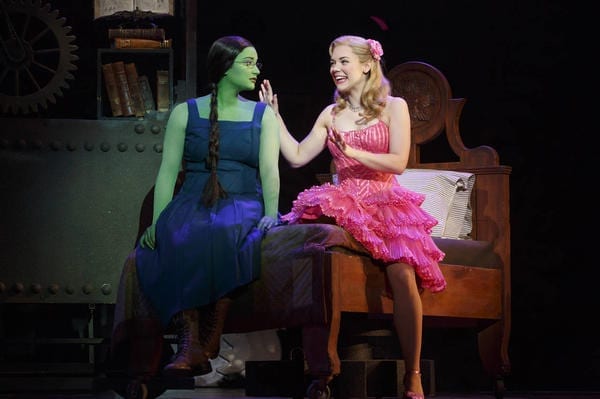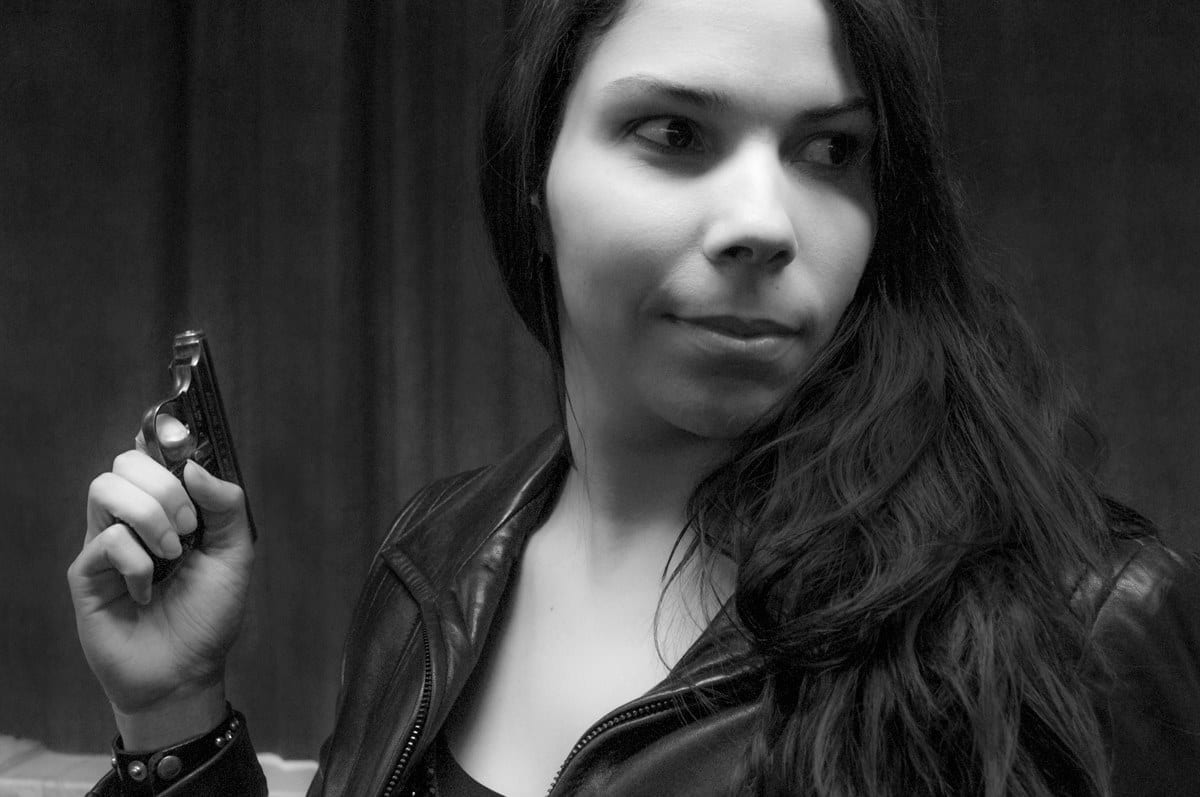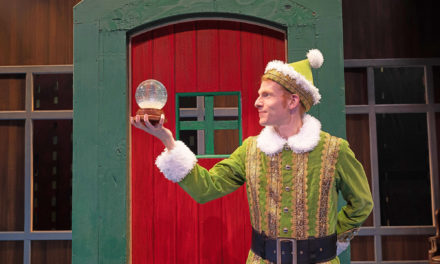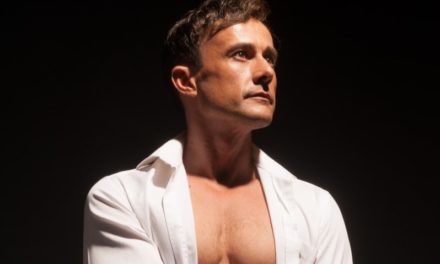SALT LAKE CITY — A villain, generally speaking, is a fictional person of bad reputation who stands between the hero and his/her goal. Every kid knows the hero is good, the villain is evil. But over the years, it has become common to write stories that illuminate the supposed history and motives behind the “bad guy.” Knowing the background of a character adds greater dimension and richness to the entire story. The reaction to The Empire Strikes Back, for example, might not have been as great had we not heard from Darth Vader that he was (gasp) Luke’s father.
As a prequel to The Wizard of Oz, the musical Wicked details the events that made Glinda into “the good witch” and created a “wicked witch of the west” from a magically inclined young woman named Elphaba. Winnie Holzman wrote the script for Wicked based upon a novel by Gregory Maguire, and Stephen Schwartz composed the songs. This creative story has been ridiculously successful in Utah and worldwide, thanks in part to its themes of friendship, prejudice, bullying, and morality. Together with stunning visual elements and music designed to pull at an audience’s heartstrings, Broadway Across America has created magic at the Capitol Theater.
The ensemble is a major strength in this production. Dressed in fantastical costumes, the talented actors fill the stage with intensity. They are the power behind sinister scenes like “No One Mourns the Wicked,” along with music director Andrew Graham, who brought out the best in Swartz’s score. The men who played monkeys impressed me with the way they moved, climbed, and jumped in that primate posture, especially Raymond Joel Matsamura as the expressive Chistery. However, I didn’t always love the ensemble’s dialogue, which felt childish even when they weren’t portraying children. But this was a minor complaint.
Choreographer James Lynn Abbott has such a detailed eye; it was a delight to see that even in a crowd of actors, a hand movement here or a turn of the body there were each precisely planned. And I loved the individual style given to Fiyero’s choreography in the scene “Dancing Through Life.” All of these wonderful qualities were wrapped up in oddly beautiful costumes, designed by Susan Hilferty, and Tom Watson‘s creative wigs. The ensemble was clothed in a variety of glamorous gowns, cupcake-type skirts, angled hats—all were posh, crazy, intricate, or off the wall. One of my favorite wigs was like a curly blonde fro with a flat top. Another impressive costuming choice was the creepy-cool flying monkey costumes were bronze colored with copper wiring as hair; when the light hit them just so, they resembled skeletons. However, Elphaba’s first costume didn’t seem to fit her well, and I wondered if it was intentional. What it possibly to to make her seem more awkward? (I also didn’t understand the sunglasses that everyone in the Emerald City wore.)
Glinda was written a delightful pattern of speech that included made-up or misunderstood words; if the trait had been limited to only Glinda, though, it would have been more effective. But because the ensemble sometimes also had an odd speech pattern, it made Glinda less unique. Gina Beck was charming as this character, bouncing between artificiality and authenticity. The little dance she did in “Popular” was priceless. So perky and energetic, Beck never lost that visible awareness of her friend and the mistakes she had made. It wasn’t until the end that I realized Glinda never performs any magic, earning her fame instead through fallacy.
As Glinda’s opposite, Emma Hunton portrayed a complex, fully-developed Elphaba. Hunton’s singing was superhuman, but it was her acting that blew me away. She displayed her emotions with her posture, her eyes, and every movement of her hands. Hunton played a different Elphaba than I have seen before, and I loved her interpretation. Her chemistry with Nick Adams as Fiyero was divine as well.
No doubt the behind the scenes influence of Joe Mantello, as the director, had a major hand in the success of these characters. The execution of the scene preceding “Gravity” was ideal, setting me up for chills as the song began. However, in the song “Popular,” I was disappointed that Glinda’s makeover of Elphaba was limited to undoing a braid and adding a flower. But both witches’ costumes progressed as their characters did, become more elaborate and sparkly. All aspects of the show get grander in Act II.
The world that Eugene Lee created for Wicked is dark, layered, and beautiful. The structures of his set, including a clock the size of the stage, a bridge, elevated podiums, and tall pieces with gears that framed the show on both sides, each had the appearance of black wrought-iron type metal; they felt aged and intricate. Lighting (designed by Kenneth Posner) was a major aspect of this show; the back layer of the set was nearly always lit in a bright hue with a silhouette of a skyline or a field at the bottom. Oz was lit up like Vegas at times, but all in green. The set and lighting combined to create a generally intense and foreboding setting, but I was also impressed by some of the smaller details, like the bedroom of the witchy roommates. Matching the characters’ personalities, Glinda had a frilly fluffy bed and a wall full of shoes, while Elphaba’s side of the room was very plain.
Effects, like the mind-blowing mask of the Wizard Oz, were created by Chic Silber. Admittedly, I don’t know if this special effect was obtained by animatronics, or whether it was operated by hand. I just know it was remarkable to watch. I learned from this production that smoke is lighting’s best friend and greatly enhances the impact of the lighting. When Elphaba flies in “Gravity,” the sum of the of the technical elements was insanely unreal. Indeed, it was beyond impressive. In these moments of awe, when all I could do was shake my head; I was keenly aware of the talent required to create something like that.
I can’t shake the impression that Stephen Schwartz knew what he was doing, emotionally, when he wrote these songs. He gave an impossible range to Elphaba, which naturally brings an audience to attention, and he wrote such mournful notes under lyrics like, “There’s joy throughout the land,” and, “I hope you’re happy.” Wicked is both dark and light, defeating and hopeful, and it has stayed with me since. The production at The Capitol Theater is impressive and, if you can get a ticket, I recommend whole-heartedly.
*The Capitol Theater is also having drawings for $25 orchestra seats for each performance. To enter, arrive at the Capitol Theater 2 1/2 hours before curtain time. Thirty minutes later, the drawing will occur; patrons must be present to win and have valid photo ID.








